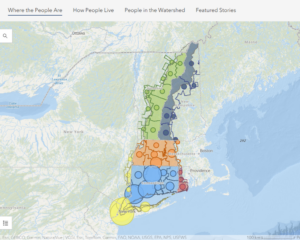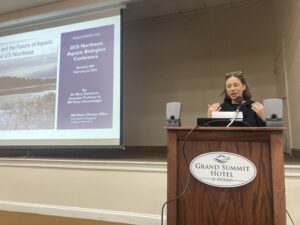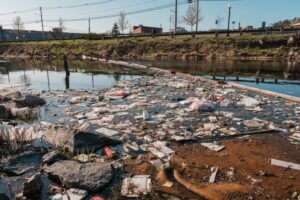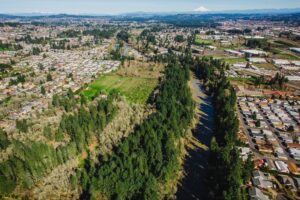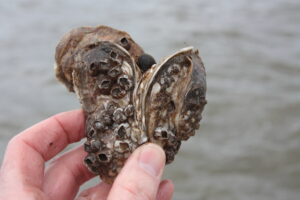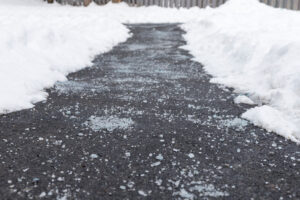-
Proper Snow Storage Can Decrease Impact of Snowmelt Runoff Pollution
Shrinking snow piles are one of the first signs that spring is on the way. Over the long winter, these piles accumulate pollutants like road salt, sand, automotive oils, car…
-
New StoryMap Explores the Land and People of the Long Island Sound Watershed
From the forested headwaters of the Connecticut River along the Canadian border, to the bustling urban landscape of Bronx, New York, a new StoryMap provides insight on the people that…
-
New Videos Explore the Relationship Between the Missisquoi River and Abenaki Culture
In northern Vermont, a Missisquoi River Basin Association (MRBA) project shares the history and relationship between the Missisquoi River and Abenaki culture through two new educational films. “Exploring Our Cultural…
-
Northeast Aquatic Biologists Unite to Advance Water Science
More than 170 aquatic and environmental biologists gathered in Bartlett, New Hampshire for the annual Northeast Aquatic Biologists (NAB) Conference. Attendees represented state, federal, tribal and municipal governments, the private…
-
Upcoming Webinar on Designing and Implementing Trash TMDLs
The next webinar in the National 303(d) Restoring Our Impaired Waters Webinar Series will focus on the state of Maryland’s experience with establishing some of the country’s first total maximum daily loads (TMDLs)…
-
Registration Opens for the Annual Nonpoint Source Conference
Early bird rates are now available The 35th Annual Nonpoint Source (NPS) Conference will take place in Freeport, Maine on April 9-10, with the theme “Nonpoint Source Pollution and Clean…
-
Clean Water Podcast Features Water Quality Trading Program in Oregon
In this episode of the “Clean Water Pod” podcast, listeners head to Oregon’s salmon-rich Tualatin River to learn about a unique approach to addressing temperature pollution. Host Jeff Berckes speaks…
-
$75,000 Awarded to Map Oyster Population in the Lower Hudson River Estuary
Mapping will fill a gap in oyster distribution data between the Piermont Pier south to Yonkers The New York State Department of Environmental Conservation (DEC) announced the award of $75,000…
-
New York Offers Free Technical Assistance to Protect Drinking Water Sources
The New York State Drinking Water Source Protection Program (DWSP2) is a locally led, state-supported program that empowers municipalities to take action to improve and protect their public water sources and surrounding…
-
Hold the Salt: Reducing Winter Salt Application
By Beth MacBlane Across the globe and especially here in the Northeast, a dramatic increase in sodium chloride concentrations in freshwater has been documented due, in large part, to road…

